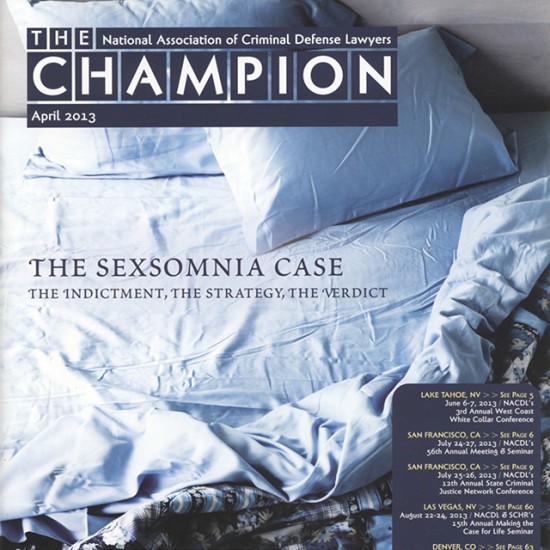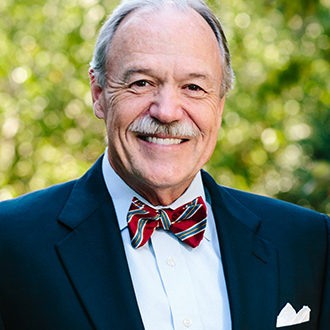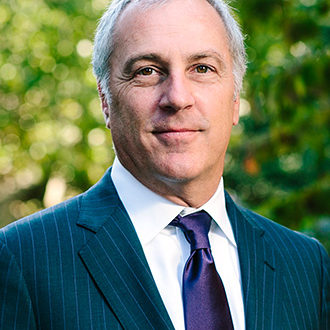Peters and Rubin featured in national magazine for first successful Sexsomnia defense in Georgia
By Douglas Peters and Robert Rubin 
Introduction
Most child molestation cases fit into one of two broad categories. In the first category, the client admits he1 intentionally committed the act of which he is accused. He may admit he has a problem and needs help, or he may insist he has no explanation for his actions because they are completely uncharacteristic of him. In the second category, the client denies he committed the act, explains he has been falsely accused, and often accuses the victim of ill motives or otherwise attacks the victim’s credibility. Defending a client in either of these situations is extremely difficult, as all child molestation cases are uniquely challenging. However, while every case is different, systematic approaches, procedures and strategies exist for handling these two types of cases effectively. Now imagine a different scenario. The prospective client walks in the door and says, “Yes, I committed the act. I did touch my daughter inappropriately, and she was entirely truthful in reporting it. But I’m not responsible because I didn’t mean to do it and didn’t even know I was doing it — because I was asleep.” What does a lawyer do with that? That is the question we were presented with in this case. The client came to us after being arrested for allegedly putting his mouth on his seven-year-old daughter’s breast and vagina. He explained what happened: One night, he went to sleep in his daughter’s bed. This was not unusual. As in many families with young children, kids and parents jumping in and out of each other’s beds was just part of the family dynamic. In the middle of the night, he was awakened by his daughter shaking him, asking, “Daddy, what are you doing?” He was startled and confused when he realized his mouth had been on her breast. He told her how sorry he was, how he must have been dreaming, and how he must have thought she was her mother. In a kind of daze, they both went back to sleep. The next morning, when the client’s wife got in bed with them, the daughter told her mother what happened: “Last night Daddy was sucking on my boob like a cow.” The child explained that she knew her father was asleep because she had to shake him to wake him up. Everyone knew it was an accident, and the child seemed to dismiss it entirely. However, the client and his wife could not get over the trauma of what happened and could not stop worrying about how it might affect their daughter long term. They decided the family needed help coping with the issue and wanted counseling for their child. Despite the risks, the client consulted a family therapist and eventually reported the incident to the local Department of Family and Children Services (DFCS). Initially, everyone seemed to agree it was a tragic accident. The client and his wife complied with every request from DFCS, including allowing their child to undergo a forensic interview. Following the interview, which the couple did not witness, the DFCS investigator told them that the child had reported things that were inconsistent with the client’s account of the incident. She said the child claimed he had put his mouth on her vagina, that she had asked him to stop and he would not, and that he had taken her clothes off and told her not to tell her mother. The client and his wife were stunned. The client said he had no memory of any of this, and both said their daughter, who had been so open and forthcoming about everything, had never suggested that these things happened. (Months later, when we finally saw the videotaped interview, we discovered that the daughter did not actually say that these things happened. So much of what she said was misunderstood, ignored, and misrepresented.) Suddenly, the authorities prohibited the client from seeing or communicating with either of his two young daughters. When a warrant was drawn for his arrest, he turned himself in and was taken into custody. He bonded out of jail three days later, found us, and together we started a 19-month journey that became one of the most interesting cases we have ever defended. The following narrative explains the unique set of facts in the case, how we adapted our approach to account for them, and how we ultimately prevailed.
Indictment
Despite our efforts to get the case dismissed, the state presented it to the grand jury. The client was indicted on two counts — aggravated child molestation and child molestation. The aggravated child molestation charge was the most aggressive the state could bring under Georgia law, carrying a mandatory minimum 25 years to life. The severity of the charge and the client’s exposure colored everything we did in the case. The source of the simple child molestation charge was the client’s admission about placing his mouth on his daughter’s breast and the daughter’s corroborating testimony in her forensic interview. The client remembered that when his daughter woke him up that night, he became aware that he had been touching her that way. However, the client did not admit to the act of sodomy alleged in the aggravated child molestation charge. He had no memory of placing his mouth on his daughter’s vagina, and he remained dumbfounded that his daughter said she thought he had. He never accused her of fabricating it and insisted she would never lie. He just could not believe it happened and could not understand why she never mentioned it. When we finally obtained discovery in the case and reviewed the child’s forensic interview, we learned that she did not actually say her father sodomized her. She said he might have been “kissing on her stomach” and maybe he was “close” to touching her “down there,” but she seemed to think he never actually did. In subsequent interviews with counselors and others, the child consistently reported the incident in this way. We persisted in asking the state to drop the aggravated child molestation charge. Unfortunately, the district attorney concluded there was enough evidence to take it to a jury. In either case, both crimes required an act and intent. Our defense was that no matter what act was alleged — whether he touched her vagina or “only” touched her breast — he was asleep when it happened, so he could not have intended to do it, and therefore could not have committed the crimes charged.
Polygraph Examination
Despite the novel issues in the case, in many ways we proceeded as normal, implementing the same strategies and approaches we have often used to defend child molestation cases. We asked the client to take a polygraph examination, which we do routinely. While some may disagree with the practice, we do it because we believe a polygraph can only help and cannot hurt the client. If he “passes,” it can be a powerful tool, even though the results are inadmissible at trial (something that must be explained to the client before he agrees to take it). For instance, successful polygraph results can be influential with prosecutors and judges, affect negotiations, and even set a favorable tone at trial. They can be persuasive with witnesses we are trying to interview and experts we are trying to get on board. This can be especially valuable in child molestation cases, where people aren’t usually lining up to speak for the client. Here, the client took a polygraph exam that assessed the truthfulness of his responses to questions about the alleged incident and about any prior inappropriate contact with his daughter. In each case, the examiner found no indication of deception. In other words, he passed.
Psycho-Sexual Examination
In most child molestation cases we handle, we have clients submit to psycho-sexual evaluations. We do this for many of the same reasons we ask clients to undergo polygraph examinations, and we use the results in similar ways. The examinations are complex and test a number of psychological and behavioral factors. The objective is to get the examiner’s opinion about, among other things, whether or not the client has markers that suggest abnormal sexual tendencies such as pedophilia. The results are not conclusive; and, like polygraphs, they are not admissible at trial. However, a successful psycho-sexual exam can be a very valuable tool for shaping pretrial opinions about the client. Our client spent three days with Dr. Gene Abel of the Behavioral Medical Institute of Atlanta. At the end of the exam, Dr. Abel effectively announced, “This is a perfectly normal guy. He is not a pedophile. I understand he passed a polygraph, and my tests show he is not being deceptive here, so there must be something else going on.” Of course, we knew something else was going on: the client was asleep and did not know what he was doing. Dr. Abel began researching the sleep issue and suggested we do the same.
‘Sexsomnia’ Research
The first thing we noted after starting the research was that these things do happen to people. Studies reveal a number of complex behaviors some people engage in while asleep: talking, walking, eating, and even driving. There are references to a number of historical cases about defendants accused of violent crimes they purportedly committed while asleep. We were somewhat familiar with these traditional “sleepwalking cases,” which every law student reads about in first-year Criminal Law. However, we were surprised and excited to find a relatively new body of literature about a condition that scientists were calling “sleep sex” or “sexsomnia.” It was like sleepwalking and other familiar parasomnias, but because of its unique characteristics and a growing recognition of its prevalence, sleep experts recently had placed the condition in its own separate category. The scientific literature indicated that certain people may be predisposed to sexsomnia. For instance, many subjects, like ours, had personal histories of unusual sleep behavior and may have had family members with various sleep disorders. Recognized triggers for sexsomnia episodes include alcohol, sleep deprivation, emotional stress, certain medications such as antihistamines, and other sleep disorders such as sleep apnea. All of these were present in our case. We knew we were on to something. Thus, we pulled the names of the experts who were studying and writing about the condition, and we started making phone calls.
Defendant’s Statements Consistent With Sleep
We realized that one of the essential building blocks of the case would have to be evidence that the client was asleep at the time of the incident. If the jury did not believe he was asleep, then none of the research or expert testimony would do him any good. How could we establish he was asleep? Where would the evidence come from? Of course, the defendant would testify that he was asleep. But would that really help? We discovered that by pointing out how consistent the defendant’s story was and how he never wavered from his account of what happened, we were able to bolster his credibility. He did, in fact, say exactly the same things to his wife, the counselor he initially consulted, DFCS, and the police. And when he testified on the witness stand, he told the same story again.
Alleged Victim’s Statements Consistent With Sleep
Even more powerful were statements from the alleged victim, consistently referring to the fact that her father was asleep and that she had to wake him up. Her mother reported that this is what the daughter told her on the morning after the incident. The child told the forensic interviewer the same thing, but the interviewer failed to explore it. DFCS ordered the child into counseling, and the child told the counselor she knew her dad was asleep because “his eyes were closed and she had to push him to wake him up.” Finally, she said the same thing to an attorney and licensed forensic interviewer whom the child’s mother retained to represent the child’s interests (an interesting move we have never seen before, but which proved critical in the case). The effect of all this corroborating testimony, coupled with testimony of the alleged victim, was extremely powerful at trial.
Defendant’s Past Sleep Behavior
The client explained that while nothing like this had ever happened with his children before, he remembered a number of similar episodes with adults and recalled a long history of odd sleep behavior since childhood. Exploring these leads, we found that his parents reported numerous incidents of sleepwalking and talking in his sleep as a child. His best friend from high school reported the same. His brother-in-law and a friend told us about two separate incidents in which the client had attempted to fondle them when they were sleeping together on annual “guys” ski trips. Finally, his wife said he had engaged in sexual behavior with her while asleep many times throughout their 14-year marriage. Evidence of the client’s prior acts during sleep was absolutely critical in developing the case. It was one of the key factors our experts pointed to in diagnosing the client and assessing the incident. And witness testimony about the prior acts was especially compelling at trial. However, we were walking a fine line between showing the jury a pattern of behavior consistent with the defense’s theory of the case and leaving jurors believing the defendant should have been on notice he had a problem. In other words, we wanted the jury to see that the more often this happened in the past, the more likely it happened here. But we worried that if jurors believed it happened too often, they might conclude the defendant should have known better than to get in bed with his child, and might decide to punish him for it.
Parasomnia Examination And Defense Experts
Armed with the results of the polygraph and psycho-sexual exams, statements from witnesses in the case and other relevant materials, we approached several sleep experts whom research had revealed as leaders in the field. After consultation with the experts, and with the knowledge that they agreed that this looked like a classic sexsomnia episode, we retained Dr. Paul Fedoroff of the Sexual Behaviors Clinic at the Royal Ottawa Mental Health Center. The defendant traveled to Canada for an in-person, forensic examination with Dr. Fedoroff; Dr. Fedoroff subsequently sent the client for a laboratory sleep study in Atlanta. The sleep study revealed the client had sleep apnea, which was a significant trigger for sexsomnia. For a second expert in sexsomnia, and one with a more local appeal, we turned again to Dr. Gene Abel. He had conducted the client’s psycho-sexual exam and had been consulting with us on the client’s sleep issues from the beginning. As discussed earlier, the classic psycho-sexual exams that specialists like Dr. Abel perform are not admissible at trial. For instance, we could not call Dr. Abel to testify that the client was not a pedophile, and we have never found another way to get someone like Dr. Abel on the stand except in mitigation at sentencing. We qualified Dr. Abel as a confirming expert on parasomnia, and the effect of his presence and testimony was huge. Effectively, we put him on the stand, introduced him as one of the world’s leaders in diagnosing and treating pedophilia and other psycho-sexual issues, explained that he had examined the client, and basically had him testify that in his expert opinion this looked like a sexsomnia episode. The implication, we think, could not have been lost on the jury. Further, because Dr. Abel was from Georgia, we felt he counteracted the effect of flying in a doctor from Canada, which we imagined might as well have been Mars as far as this small-town jury was concerned. The duo was exceptional.
Improper Influence of Alleged Victim
Under the Georgia Supreme Court’s decision in Barlow v. State,2 a defendant in a child molestation case may introduce expert testimony about the proper techniques for interviewing children and about whether proper interviewing techniques were used with the alleged victim in his case. Experts agree that “proper techniques” are those that are not suggestive, coercive, or biased. Accepted protocols exist for conducting “proper” forensic interviews of children; there are things the interviewer simply should not do. For instance, the interviewer should not, among other things, fail to consider or develop alternative hypotheses; misuse anatomical drawings; or use coercive, leading, or repetitive questioning. When the interviewer does something improper, the interview is contaminated and the child’s statements are unreliable. In every child molestation case, the lawyer should consult an expert to conduct this kind of Barlow analysis. Prosecutors and jurors are often skeptical of whatever defense the child molestation defendant brings, and they can be especially skeptical of unusual or novel defenses — such as the defense in this case. This is the reason it is so important to attack other things, like improper interviewing, to create other opportunities to raise reasonable doubt. In this case, we hired a licensed clinical social worker and forensic interview expert, Dr. Nancy Aldridge, as our “Barlow expert.” Her analysis of the interview and her subsequent testimony about it at trial were extremely valuable for a number of reasons. For example, Dr. Aldridge pointed out that the interviewer failed to explore “alternative hypotheses” when the child indicated her father was asleep. Indeed, the interviewer seemed to ignore the comment, and did not pursue it at all. Further, Dr. Aldridge indicated the interviewer improperly used repetitive questioning about where the child was touched. Our position was that the child never indicated her father touched her vagina; we thought that was clear. In the alternative, Dr. Aldridge helped us show that any uncertainty the child might have had about it came from the interviewer’s improper, repetitive questioning about the matter rather than from any real doubt that she had.
Alleged Victim’s Conduct And Behavior Inconsistent With Abuse
Under Hall v. State3 defendants in child molestation cases can put up expert testimony that the alleged victim’s conduct and behavior are inconsistent with that of a typical sexually abused child. Experts have found that children of abuse often exhibit common behaviors. For example, when children know they have been violated, they are often afraid of their attacker and will try to avoid him. The daughter in this case did not exhibit behavior indicating that she had been abused. In fact, by all accounts, during the several months between the incident and the client’s arrest and banishment, the child behaved normally with her father in every way as if nothing had ever happened. Everyone reported that the child adored her father, never showed any fear or discomfort with him when he was still at home, and begged for his return. Our position was that she acted this way because she knew from the beginning that he was asleep and did not mean to do what he did. She never felt the trauma of abuse because she knew it was an accident. We called Dr. Harvey Gayer of Athens, Ga., to testify as our “Hall expert.” Ironically, Dr. Gayer was involved in the case because DFCS had ordered that the child undergo counseling with him. Based on his observations of the child, and those of other witnesses who observed her behavior after the incident, Dr. Gayer testified that the child did not exhibit conduct and behavior typically found in sexually abused children.
Good Character Witnesses
Early in every case, we ask the client to prepare a list containing every person who might testify for him as a character witness. Testimony from the right type of character witness — that the client has good character, that he is a truthful person whom the witness would believe under oath, and that his reputation is good — can be extremely effective. Of course, there are risks involved with putting up character witnesses. If, in fact, the client has spotty character, then putting the client’s character at issue can “open the door” to bad character evidence that otherwise might be inadmissible. In this case, we were fortunate to have a client who seemed to have outstanding character. He did have two DUIs in his record: one he picked up almost 20 years earlier when he was in college and another that was 10 years old. However, in order to control how these DUIs were presented to the jury, we decided to bring them in ourselves through the client’s direct examination. It really was not an issue for the purposes of deciding whether to put up character witnesses. We were also fortunate to have a lot of good character witnesses from which to choose. The client lived in a small community, where he and his family were well known and respected. Everyone in town seemed to know that his wife, children, in-laws, and close friends supported him and maintained his innocence. Therefore, it was not hard to find people who were willing to speak up for him. Also, given the size and nature of the community, most of the character witnesses were well known and respected. If the jurors did not know them personally, they probably knew who they were: a local doctor, the superintendent of schools, the children’s teachers, and local business people. Presenting them to the jury was an extremely powerful moment in the trial.
Trial Preparation — Mock Trial/Focus Group
One of the real turning points in the case was the mock trial/focus group we conducted. We do not always use these kinds of exercises. But when unusual facts or novel defenses are involved, as in this case, a mock trial/focus group can be an effective way to test out the case. We put together the basic elements of a defense we were feeling pretty good about, presented it to a mock jury, and got slammed. It was demoralizing for us and particularly hard on the client, who was not well received by the jurors. The chilly reception really surprised us because we expected him to be a very sympathetic witness. However, he seemed unusually antagonistic and hostile that day, perhaps because he thought he was supposed to be. Using the feedback from the focus group, we worked with the client on his direct and cross-examinations over the next few months so that his true personality could shine through the stiltedness of courtroom examinations. The information we received helped the client find the words and demeanor that would communicate to the jury who he was and how devastated he continued to be about what happened. The feedback we received from this event was invaluable. We learned about other people the jury wanted to hear from and why. In addition, we learned how to embrace the bad facts in the case, such as the client’s drinking on the night of the incident, and turn them to our advantage. Finally, we learned how to present a complex, almost unbelievable defense in a way that jurors could understand and accept. What we learned from comments from the mock jury can be instructive for all attorneys asserting a “sexsomnia” or “sleep sex” defense — especially when the facts of the case involve alleged intoxication by the defendant. After presenting the case to the mock jury six months before trial, all but two of the 12 jurors indicated they were siding with the prosecution, albeit in varying degrees: three said the state should “definitely” win; two said the state should “probably” win; and five said they were “slightly siding” with the prosecution. Only one juror, at the end of the presentation, indicated a leaning towards (“slightly siding with”) the defense. The comments from the mock jury included several statements regarding the “sexsomnia” defense and the conduct of the client. Regarding the client’s consumption of alcohol: “He had more to drink than he is saying.” “He was drunk, could not help himself, and did not care.” “Drinking or drunk is no excuse.” “I think he has a drinking problem.” “The alcohol messed his mind up.” “I believe he was drunk.” “Six drinks is enough to change your state of mind.” Regarding our defense of “sexsomnia” or “sleep sex”: “Hard to believe.” “I don’t know or have not heard anything about this before.” “It is another way for some people not to have to take full responsibility for what they have done.” “Never heard of it.” In the end, it might have been the most valuable time and money we spent on the case.
Alleged Intoxication Of Defendant — Expert Testimony
The prosecution’s theory of the case was that the defendant was drunk, not asleep, when he molested his daughter. The district attorney reasoned that he was either too drunk to control his urges or so drunk he did not know what he was doing. Alcohol was one of the biggest challenges in the case. From the beginning, the client admitted to everyone that he had been drinking on the night of the incident. He brought it up, he said, because he wanted to be completely honest about what happened, and because he thought the alcohol might have caused him to wake up slower. However, the evidence showed he never told anyone he did this because he was drunk, and he insisted that he was not. Given the focus group’s comments about alcohol, we could not rely on our client’s testimony that he was not intoxicated; we had to give the jury the most credible evidence about intoxication we could find. Again, we turned to the best expert in Atlanta. We hired pharmacologist Dr. Gaylord Lopez, the head of the Georgia Poison Control Center, to help us show that the client was not drunk when he got in bed with his daughter and went to sleep. Based on recollections of the client and his wife, supported by receipts from the restaurant where they dined that night, Dr. Lopez assembled data about what the client ate and drank, and over what period of time. He coupled this information with physical data about the client and accepted standards of how the body metabolizes alcohol. In the end, Dr. Lopez demonstrated to the jury that, based on this data, the client’s blood-alcohol level would have been below the legal limit at the time of the incident. His testimony all but eliminated the prosecution’s theory that the client committed the offenses because he was drunk.
Lesser Included Offenses
Whenever we defend child molestation and other serious charges, we always look for lesser included offenses. Depending on how we feel about a case, we might want the members of the jury to have an all or nothing choice, or we might want to give them another option. The additional option serves as something they can compromise with if they do not want to convict the defendant of the crime charged but do not want him to walk away scot-free. Juries tend to compromise if they can, and a lesser included offense can enable them to do that. It is never easy to decide whether to charge the jury with the lesser included offense, but it is always comforting to know the option is available. In this instance, we were thrilled to have the misdemeanor offense of reckless conduct in our back pocket. As discussed earlier, we were afraid the jury might come away from our sexsomnia defense believing that the client should have been on notice about his sleep condition, and that it was just wrong for him to get in bed with his daughter. We worried that even if the jurors found his conduct was unintentional, they still might want to punish him for what they perceived as recklessness. Thus, it was nice to know that if we believed they were leaning in that direction, we could give them an option. As it turned out, we did not ask the court for the charge. We felt good about the case, believed it was clear the state had not met its burden, and were reasonably confident the jury was with us.
The Law and Requests To Charge — Acts Committed During Unconsciousness or Sleep
In Smith v. State4 the Georgia Supreme Court “officially” established for the first time in Georgia a separate, complete, affirmative defense of unconsciousness or somnambulism (sleepwalking). In addition to pattern charges on intent, accident, expert witnesses, and other “usual” charges, we requested a special charge from the rule in Smith. The court granted the request and read this charge to the jury: “Under Georgia law, in order to be criminally responsible for a crime, a defendant must have voluntarily committed the act and have had the intent to commit the act. A person who commits an act during unconsciousness or sleep has not committed a voluntary act and is not criminally responsible for the act.” We think it was absolutely crucial to the outcome in the case that the jury was able to hear this specific, on-point language from the bench just as they were retiring to deliberate. Less than two hours later, they returned a verdict of not guilty on both counts. We give special thanks to third year Mercer University law student Foss Hodges for his contribution to the preparation of this article.
Notes
- For simplification, we refer to the defendant-client as male. We do not mean to suggest that this is always the case.
- Barlow v. State, 507 S.E.2d 416 (Ga. 1998).
- Hall v. State, 411 S.E.2d 777 (Ga. App. 1991).
- Smith v. State, 663 S.E.2d 155 (Ga. 2008).
About the Authors
 Doug Peters is nationally recognized for his expertise in the defense of citizens accused of crimes against children. He is the author of The Defense of the Child Molestation Case in Georgia, lectures frequently to judges and lawyers, and is a past president of the Georgia Association of Criminal Defense Lawyers.
Doug Peters is nationally recognized for his expertise in the defense of citizens accused of crimes against children. He is the author of The Defense of the Child Molestation Case in Georgia, lectures frequently to judges and lawyers, and is a past president of the Georgia Association of Criminal Defense Lawyers.
 Bob Rubin has been practicing criminal defense in state and federal courts for over 26 years. He is a frequent lecturer throughout Georgia and is an adjunct professor at Emory University School of Law. He is also on the Executive Committee of the Georgia Association of Criminal Defense Lawyers.
Bob Rubin has been practicing criminal defense in state and federal courts for over 26 years. He is a frequent lecturer throughout Georgia and is an adjunct professor at Emory University School of Law. He is also on the Executive Committee of the Georgia Association of Criminal Defense Lawyers.
Reprinted from The Champion archive.








